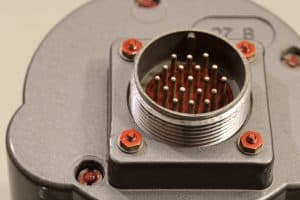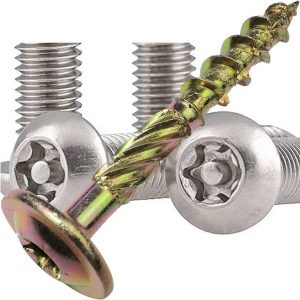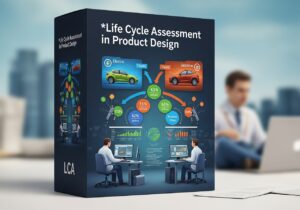Avoid these product design mistakes for a lot of troubles: some product features or technologies are tempting at first, but may, with or without additional factors or errors, be your next ticking time bomb or your disaster waiting to happen, leading to a lot of user dissatisfaction, quality complains, or even legal issues or market recalls.
We have divided here below these questionable mistakes into “user features”, or at least pretending to be for the user’s benefit, and “technical design choices”.
Of course, there may be good reasons to implement these as not being design mistakes, but do some Risk Analyses while implementing any of the below features or technology.
Do also have the long-term in mind, all the Life-Cycle steps of your future product or process, and not only your direct cost, assembly, or solution-finding to meet tomorrow’s project deadline.
The following two posts can be complementary readings on avoiding design mistakes:
Questionable Product Features Design Mistakes
in general,
Avoid any product feature … that is not a user feature!
Non-user features may come much more frequently than desirable as specs are written, or the project develops.
Home-calling Device or App
Home-calling device or app: if there is no response … is your product working with fewer features? or maybe stops functioning completely? This is usually closely related to Licence and Subscription but can be for maintenance or other data mining reasons. Mind that, of course, the user’s location may be without connection, your infrastructure may be down, some countries have network restrictions or surveillance, and so on. Not to mention that your company or service provider may disappear or your IP address change …
Tip on Tip: the above “feature” could become very close to the concept of planned obsolescence, depending on how this has been implemented and/or could have been avoided. Think twice
New Special Electrical Connector

Do not design a new electrical connector while OEM component catalogs have tons of them … Think twice before paying ten times more than an off-the-shelf solution, add CAPEX and brick walling your customer and your production by designing a new electrical connector.
And if your product needs an original number of connections, maybe taking the version above, with more wires, may permit future feature upgrades.

Do challenge your marketing if they want to brick wall your customer or want to sell accessories at a high price.
Keep in mind that for some industries, devices, and countries this is becoming illegal to power some home appliances with original connectors.
Note: this also applies to many fluid connectors
Device With Separate Software To Configure

The most underestimated flaw we observe these days, thus the highlight.
If your hardware device is intended to be configured remotely via a desktop app or a phone app … what about this nice user feature when their OS is upgraded or the computer or phone becomes obsolete? Will your device not lose all its versatility or even all its features? Examples include:
- most connected watches
- connected home appliances or home automation accessories
- electronic music instruments
- electric bicycles
… and generally, all small devices that, to gain cost or size, the designers and marketers have decided not to include their own buttons and screen and rely on a remote third party.
As for the battery advice below, of course, if your market approach is only a short-term sell and product life … you may not have the problem … yet. And, of course, this is not the approach we recommend here for value-added and ecological products.
The million dollar tip: we strongly recommend having a clear view of the software upgrades that you will maintain -or not-, and have accounted for this, even long after you do not sell the main product anymore. And to avoid potential legal actions (highly probable if you have a high runner product), do communicate on this since day one (yes, at least the small prints on the box or IFU …)

Original Screw Pattern
With a specific pattern on both the screw and counterpart. If you really -we already challenge that- need something special (high torque, extremely small or big, user-limited access …), tons of unique patterns already exist.
Note: to some extent, this also applies to any specially designed tool.
Software Driven Shut Off
No physical on/off switch, but a fully software-driven on/off having no main switch permits a leaner design, may reduce the cost or size, or avoid some water sealings, but if that function is handled only by software, do ensure that it is robust before implementation to avoid one day having to tell your users:
“Wait until the battery depletes completely” :(
or “Unplug the main power cable“, and even in these cases, think twice if the hot/cold boot mode will solve the problem or crash even more.
Tip on Tip: your device does have a physical on/off switch, but it is on the back of the equipment, and the equipment is frequently, or intended to be, fix-mounted…
No Remote Software Upgrade Possibility
via bootloader or equivalent system for micro-controller based or full software install for bigger operating system-based products, the possibility of upgrading the system is a 99% must. Of course, some critical safety, data protection, minimal code or hardware size, or other valuable reasons may forbid that, but would you guarantee that your product is entirely bug-free?
And would you like to tell your users or sales channels in advance that they will never have some feature improvement without repurchasing it or returning it to the factory because the design did not take that into account?
Over-necessity of Explanations or Labeling
If to use your product, you feel the need to explain in the IFU, on the stickers, on the buttons, on some help screen (…) how your new product is working, maybe re-thing the whole usability of the product to more naturally guide the user, or better, suppress some stages or operations. And do not just suppress some of the labels initially identified as required.
Grouping Product Features at the Cost of Reliability
Do not group product features that either may cause reliability issues to each other or where the resulting one product may be more expensive than buying several products independently.

Some examples if the design is not tested thoroughly, that may...
You have read 53% of the article. The rest is for our community. Already a member? Log in
(and also to protect our original content from scraping bots)
Innovation.world community
Login or Register (100% free)
View the rest of this article and all members-only content and tools.
Only real engineers, manufacturers, designers, marketers professionals.
No bot, no hater, no spammer.
Related Readings & Tools
- User-centered design principles: focus on understanding user needs and preferences to guide the design process and avoid missteps.
- Usability testing: conduct comprehensive usability tests to gather feedback and identify potential issues from real users.
- Design thinking approach: utilize design thinking methodologies to foster creativity and innovative problem-solving.
- Risk analysis and management: identify potential risks in the design phase and develop strategies to mitigate them.
- Feedback loops: establish continuous feedback loops with stakeholders and users to refine and enhance the product.
- Accessibility and inclusivity considerations: ensure the product is accessible and inclusive for all potential users, avoiding alienation of any group.
- Sustainability and ethical design: incorporate sustainable practices and ethical considerations into the design process to align with consumer values and regulatory standards.
Glossary of Terms Used
Forms Follow Functions (FFF): a design principle stating that the shape or appearance of an object should be primarily based on its intended function or purpose, emphasizing practicality and usability over aesthetic considerations.
instruction For Use (IFU): a document that provides detailed information on the proper use, handling, and maintenance of a medical device or product, ensuring safety and effectiveness for users.
Metal Active Gas (welding) (MAG): a welding process that uses a continuously fed consumable electrode and a shielding gas mixture, typically containing carbon dioxide, to protect the weld pool from atmospheric contamination during the joining of ferrous and non-ferrous metals.
Metal Inert Gas (welding) (MIG): a welding process that uses a continuous solid wire electrode fed through a welding gun, creating an electric arc between the wire and the workpiece, melting both to form a weld pool, typically shielded by an inert gas to prevent contamination.
Minimum Viable Product (MVP): a basic version of a product that includes only essential features necessary to satisfy early adopters and gather feedback for future development. It aims to validate hypotheses about customer needs with minimal resources and time investment.
Original Equipment Manufacturer (OEM): a company that produces parts or equipment that may be marketed by another manufacturer. Typically, these components are integrated into the final product, which is then sold under the latter's brand name.
Verification and Validation (V&V): a process to ensure a system meets specifications and fulfills its intended purpose, involving two distinct activities: verification checks if the product meets design specifications, while validation assesses if it satisfies user needs and requirements.
Work in Progress (WIP): items that are partially completed in a production process, including raw materials, labor, and overhead costs incurred up to a certain point. These assets are not yet finished goods and are essential for tracking production efficiency and inventory management.



























It’s a reminder that designing with longevity and user experience in mind is essential to avoid not just technological obsolescence, but also potential legal and customer satisfaction issues.
This article highlights crucial considerations for product design, emphasizing the importance of user-friendly interfaces, robust software integration, and thoughtful feature grouping.
This article hits the nail on the head by emphasizing the importance of avoiding design decisions that prioritize short-term gains over long-term usability and customer satisfaction. It’s crucial for companies to consider the entire product lifecycle and potential pitfalls, such as reliance on proprietary connectors or separate configuration software, to ensure they don’t alienate users or face legal challenges down the road.
Related Posts
Greenwashing: A Gentleman’s 15 Best Tips to Exquisite Deception
How-to Best Fight a Pending Patent
All Patent Status: PCT vs Pending Patent vs Published Patent vs Granted Patent
Best 10 Patent Invalidation Strategies and Tools
Life Cycle Assessment (LCA) In Product Design Specifically
Product Value Analysis Overview